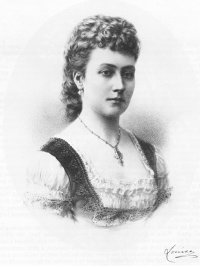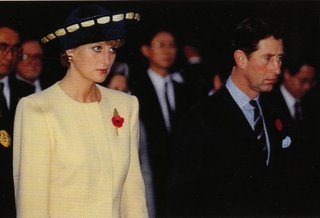Royalty have their image on stamps and commemorative items. Some more notable royals have buildings, docks, and streets that bear their names. At one point it was even fashionable to honor royalty, by naming a food dish after them. Although some of the stories behind the names of these items are unsubstantiated, here are some examples I've located:
Many dishes are named for Queen Victoria: Victoria Pea, Victoria Plum, Victoria Apple, including sole, eggs, salad, a garnish, several sauces, a cherry spice cake, a bombe, and small tarts. The Victoria sponge cake (or Victorian Sandwich, Victorian Cake) was so named because the Queen was known to enjoy a slice with her afternoon tea.
Prince Albert: Albert Sauce, Filet of Beef Prince Albert, Prince Albert Pea, Cobourg Loaf and the Prince Albert Apple. The Apple, thought to have originated in Berkhampstead, Herts, raised by Mr Thomas Squire, as a cross between Russet Nonpareil and Dumelow's Seedling and named after Queen Victoria and Prince Albert, who reputedly visited Berkhampstead on the very day that Mr Squire planted his seedling in his garden. He initially named the apple tree Victoria and Albert. However it was renamed Prince Albert some time later when it was grown commercially.
Like his parents, Edward VII had several foods named for him: Poularde Eduoard VII, King Edward VII Potato, and the King Edward VII Apple. Possibly the most famous example is Crepes Suzette. Said to have been created for then-Prince of Wales Edward VII on 31 January, 1896, at the Café de Paris in Monte Carlo. When the prince ordered a special dessert for himself and a young female companion, Henri Charpentier, produced the flaming crepe dish. Edward reportedly asked that the dessert be named after his companion Suzette (reportedly the daughter of a friend) rather than himself.
Battenburg Cake: Supposedly named in honor of the marriage of Queen Victoria's granddaughter,
Princess Victoria of Hesse-Darmstadt to Prince Louis of Battenberg in 1884. A two colored, chequered sponge cake, four quarters of sponge honour the four Battenberg princes, Louis, Alexander, Henry and Francis. During the war with Germany the family decided it should anglicize its name in the face of anti-German feeling and the Battenberg family name was changed to Mountbatten, thankfully the cake kept its original Battenberg name.
Pizza Margherita: This pizza is dedicated to Queen Margherita of Savoy. She was interested in the popular dish that her French chefs could not prepare so the famous "pizzaiolo" Raffaele Esposito was invited to court and suggested three pizzas, this one reflecting the colours of the Italian Sabauda flag, the Marinara and a white cheese pizza. Garlic, considered improper for the delicate palate of the Queen was avoided. So on the 11th June 1889 Pizza became a dish fit for Royalty.
Queen Elizabeth, The Queen Mother: Queen Mother's Cake. The story is that Jan Smeterlin, the eminent Polish pianist, loved to cook. And he collected recipes. This is one that was given to him on a concert tour in Austria.When the Queen Mother was invited to tea at the home of the Smeterlins, the hostess baked the cake according to Smeterlin's recipe. The Queen Mother loved it and asked for the recipe. Then--as the story goes--she served it often at her royal parties. Including the time she invited the Smeterlins to her home.
Some other examples of food named for royalty:
Queen Alexandra: Gâteau Alexandra, consommé Alexandra, soup, sole, chicken quail
Consommé Princess Alice: Named for
Princess Alice, Countess of Athlone, one of Queen Victoria's granddaughters.
Christian IX (of Denmark) cheese: also called Danbo. Named after the "Grandfather of Europe"
Queen Charlotte (wife of George III): Apple Charlotte, named in her honor because she was a supporter of apple growers.
Queen of Sheba Cake (or Reine de Saba)
Consommé Marie Stuart: Named after Mary, Queen of Scots
Queen Mary (consort of King George V): Twinings Queen Mary tea
Prince of Wales Twinings tea
© Marilyn Braun 2006
 Queen Victoria's Family: A Century of Photographs
Queen Victoria's Family: A Century of Photographs The Complete Idiot's Guide to British Royalty
The Complete Idiot's Guide to British Royalty Tsar: The Lost World of Nicholas and Alexandra
Tsar: The Lost World of Nicholas and Alexandra The Jewels of Queen Elizabeth II: Her Personal Collection
The Jewels of Queen Elizabeth II: Her Personal Collection Queen Elizabeth II: A Celebration of Her Majesty's Fifty-Year Reign
Queen Elizabeth II: A Celebration of Her Majesty's Fifty-Year Reign











